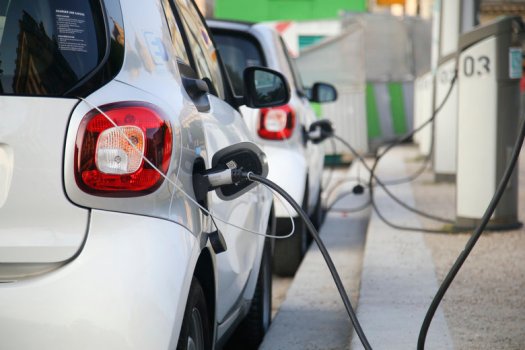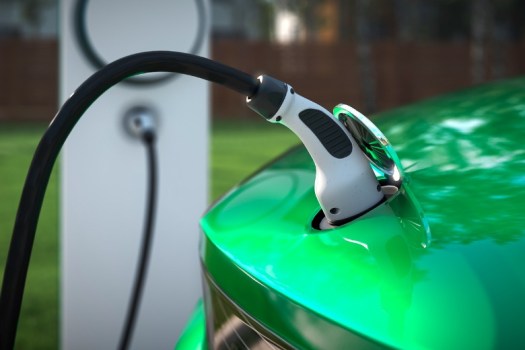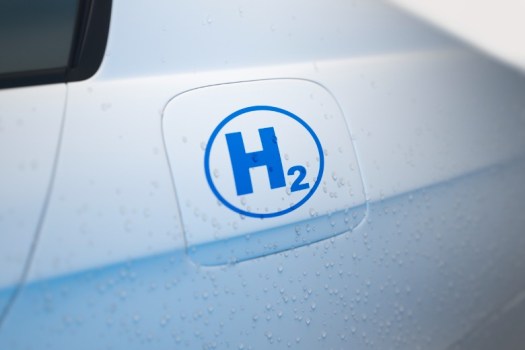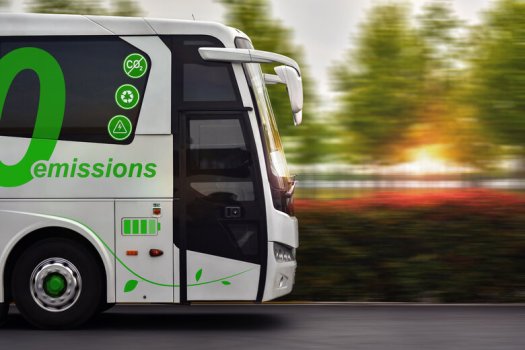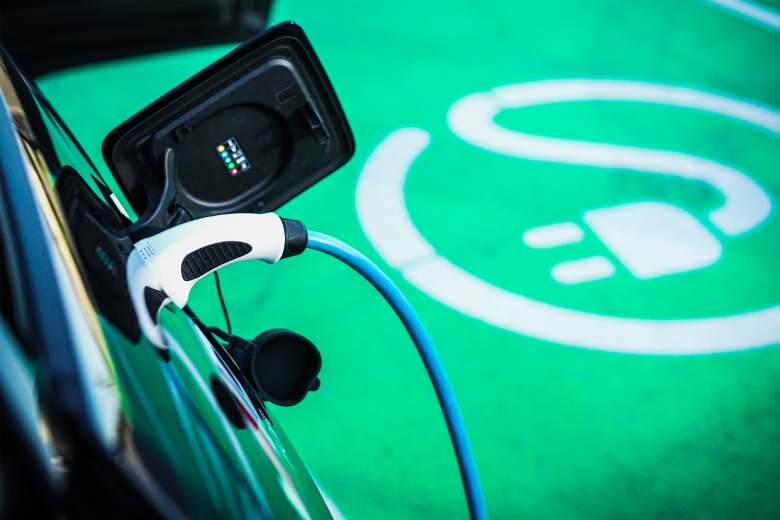
If you’re talking innovation and uptake of new technologies, it’s not often that government is in front. But when it comes to zero emission vehicles, governments at all levels seem to be taking a lead.

Beyhad Jafari is CEO of the Electric Vehicle Council, which represents around 70 stakeholders and companies across the electric vehicle sector and advocates for the electrification of road transport.
“A major strand of what we do is working with government in developing policies and regulations supporting uptake of EVS, including their own operations, and how they can go about transitioning their fleet over to electric,” Jafari tells Government News.
“There are a number of governments across the country now that have, within this decade, set a target of achieving 100 per cent of their own suite of vehicles being electric.”
But it’s not just about transitioning fleets to EVs – governments are also recognising their role in establishing charging infrastructure and kickstarting the uptake of EVs across the country.
According to Jafari, the ACT is pioneering the move towards green fleets.
The ACT became the first Australian jurisdiction to announce a 100 per cent zero emission target for its passenger fleet in 2018 and currently has over 140 zero emissions vehicles, including 52 EVs, 70 plug-in hybrids and Australia’s first fleet of hydrogen vehicles.
It’s also committed to a zero emissions public transport system by 2040 with procurement underway for 90 electric buses.
“They’ve been on the journey longer, they’ve been able to learn more, and they’ve also gone on to produce reports to show what they’ve learnt,” Jafari says.
Among the research coming out of the ACT, a team from the ANU is looking at how electric vehicles can support energy security by injecting power into the grid in a trial involving 50 ACT govt EV fleet vehicles.
I think they’re ahead of the pack compared to business fleets, and they’re being led by strong climate change and emissions targets.
Dr Kathryn Lucas-Healey
Dr Kathryn Lucas-Healey, a research fellow in battery storage and grid integration from the ANU, says government has a stake in trialing new EV technology.
“It’s attractive to governments, because they like to lead the way. And there’s the public good of helping out the grid because the government in many ways has the responsibility for maintaining security of supply,” she tells Government News.
“I’ve been talking to people from government fleets and there’s lots going on in the space.
“I think they’re ahead of the pack compared to business fleets, and they’re being led by strong climate change and emissions targets.”
States and Territories take action
Elsewhere, the NSW government announced $500 million in the state budget to support council efforts for greater electric vehicle use, and has set a target of electrifying NSW government passenger vehicle fleet procurement by 2030, with an interim target of 50 per cent EV procurement by 2026.

It also plans to transition the state’s 8,000 buses to zero emissions, and rolled out more than 50 electric buses across Sydney in early 2021.
The NSW EV Strategy says the government will use its bulk purchasing power to incentivise importers to increase the range of EV models sold in NSW.
“The NSW government will conduct a strategic review of NSW Procurement’s Approved Vehicle List and associated procurement processes, to make it as easy as possible for government agencies to buy EVs,” the strategy says.
South Australia released its EV Action Plan in December and is working towards transitioning its fleet of 6,800 passenger vehicles to plug ins. It will also launch a Fleet Pledge Program in late October aimed at helping local government transition to EVS.
WA’s state EV Strategy sets a 25 per cent EV target for all new light and small passenger and small and medium SUV government fleet vehicles by 2025, with the state’s water corporation transitioning up to 40 per cent of its metropolitan fleet to EVS over the next five years.
The Victorian government plans to invest $10 million to add zero-emissions vehicles to the government fleet, starting with 400 vehicles in the next two years, while Queensland’s EV strategy, The Future is Electric, makes a commitment to transition the government fleet to electric vehicles. Government fleet manager QFleet, which currently manages 100 electric vehicles, this year also welcomed five new hydrogen vehicles.
Tasmania announced in late 2020 it will electrify its entire fleet by 2030 and in July, the NT released an EV strategy and Implementation Plan which includes increasing EVs in the government fleet.
In February the federal government Comcar fleet announced it was trialing EVs for two years to assess charging and associated costs, with a Hyundai INIQ and Tesla Model 3 to be used across Sydney, Melbourne and Canberra as day-to-day transport for parliament staff and guests.
And movement isn’t just afoot in Australia – US President Joe Biden wants to upgrade the 640,000 strong government fleet to EVs, and NZ plans to have its government fleet emissions free by 2026.
Local government early adopters
Local governments across Australia are also adopting EVS into their fleets.
The Electric Vehicle Council says the electrification of specialised and heavy vehicles is a particular focus for local governments, with many trialling or using electric garbage trucks and specialised equipment, such as a cherry pickers.

“Local government’s always been the most enthusiastic and progressive,” Jafari says.
“The way they’ve been doing it is buying vehicles for their own fleets, rolling out charging infrastructure to their own buildings and the community, as well as well as engaging with consumer education, such as drive days in their EVS.”
Central Coast Council introduced its first 100 per cent EV into its fleet in 2019 and now has one of the largest local government fleets in NSW with six hybrid electric trucks, nine full battery electric passenger vehicles and 112 hybrid electric passenger vehicles.
It also has the state’s first full battery electric tipper truck and is expecting delivery of its first hybrid 20-tonne excavator.
Director of corporate affairs and CFO at Central Coast, Natalia Cowley, says there were a number of reasons for going down the EV road.
“Obviously Council has got a target to reduce emissions and we live in such a beautiful part of Australia that we have a responsibility to maintain, that but in addition there are financial benefits,” she tells Government News.
Obviously Council has got a target to reduce emissions … but in addition there are financial benefits.
Natalia Cowley
“Initially the capital expenditure may be slightly higher but over time there are reductions in those costs and (EVs become) much easier for us to manage and less costly.”
Cowley says there are challenges to fleet electrification, including financial entry points and access to vehicles. Another is having sufficient infrastructure to overcome range anxiety.
“You want to make sure that if you’re going to have EVs they’re not going to end up stranded on the side of the road because the distance between charging stations is too large,” she says.
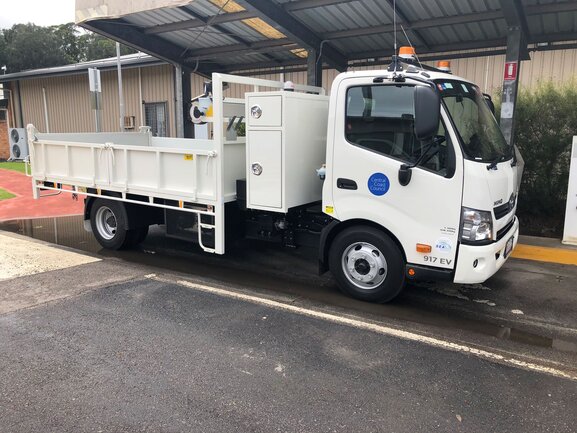
Lismore City Council announced earlier this month that it had accepted a tender to design and construct a solar car park, including Lismore’s first two EV fast chargers, joining City of Newcastle which has a built an E-Transit Hub and solar powered EV charging station.
Canterbury Bankstown is also moving to transition Council’s fleet to electric vehicles, install charging infrastructure and procure an electric garbage truck.
The Charging the Regions project, an initiative of the Central Victorian Greenhouse Alliance involving 55 local councils, aims to improve regional connectivity by rolling out a network of local government owned fast chargers across regional Victoria.
LGNSW president Linda Scott says many other councils are supporting the use of EVs and tranisitioning their fleets to EVs.
That’s why local government must now have a voice on government decisions about charging point locations, she says.
“Ultimately councils know their communities best and play a key role in land use planning for their areas so its important they are part of any discussions at the beginning of the process,” Cr Scott says.
Tri-council charging network
Three councils in Sydney’s eastern suburbs decided they weren’t going to wait to be asked.
In 2019 Waverley, Woollahra and Randwick became the first councils in NSW to provide public on-street charging stations via a Tri-Council Public EV Charging Network.

Stations are currently installed at Bondi Beach, Double Bay, Coogee Beach and Randwick, Bondi Junction and Maroubra, and there are plans for more.
“The idea for it came from our low carbon future plan which we did across the three councils and looked at how as a community we were going to reduce emissions across the whole of the eastern suburbs of Sydney,” project manager Anthony Weinberg tells Government News.
“One of the five key strategies was to encourage the uptake of electric vehicles, so we thought we would take the plunge and put together a bit of an EV charging network.”
Weinberg admits the councils were making a foray into uncharted waters and says they were prepared for a backlash.
“The business case was unknown, usage was unknown, and you’re potentially taking parking away from commercial areas which is never appreciated if it’s not going to be used,” he says.
However, the reaction to the launch of the network was “immensely positive”, Weinberg says, and the number of users has increased from 45 per month in the first months to over 300.
He says all three councils now have a mandate to grow their network, with Randwick looking at adding five chargers a year.
The business case was unknown, usage was unknown, and you’re potentially taking parking away from commercial areas.
Anthony Weinberg
Another hotspot for EVS is the northern beaches LGA, which has more than 2,100 full or hybrid vehicles according to CEO Ray Brownlee, prompting Northern Beaches Council to adopt its own EV charging infrastructure plan which went on public exhibition in April.
Currently, there are eight public charging stations in the LGA, seven in private property commercial carparks, and an eighth at a Council-owned carpark.
Key locations around the peninsula are being finalised with consideration to both private-operated and Council-owned electric vehicle charging stations in strategic locations like carparks, on-street sites and at key hubs, Mr Brownlee says.
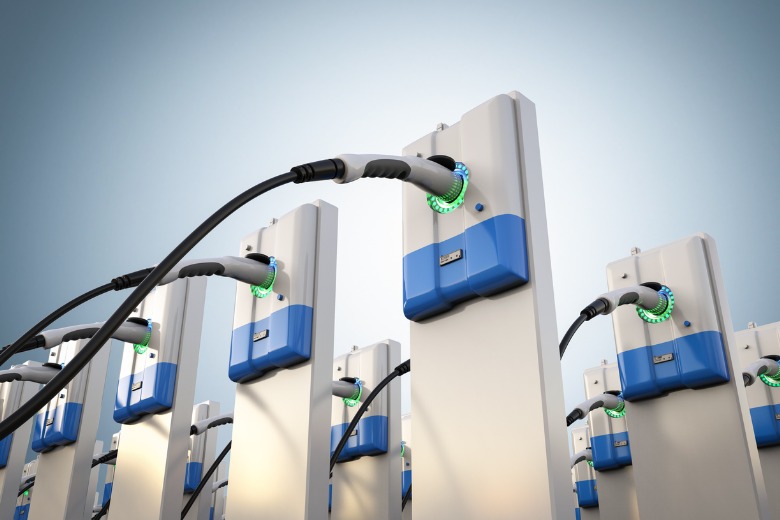
State governments are also going gangbusters on charging infratstructure.
Western Australia announced last month it would create Australia’s longest EV fast charging network with 45 locations connecting Perth and regional WA, including Kununurra, Esperance and Kalgoorlie and in February Tasmanian Premier Peter Gutwein opened Electric Highway Tasmania, a statewide fast-charging network.
The NSW government this month released an EV charging masterplan to help providers and planners develop future fast-charging infrastructure.
In Victoria the government will invest $19 million to roll out more charging infrastructure on major highways, at key tourist attractions, and locations across Melbourne and regional Victoria, more than tripling government-supported fast-charging sites across Victoria, and adding at least 50 charging points to the existing network of 24 sites.
Driving the second hand market
Infrastructure Australia’s 2021 Plan recommends that government fleets should target 100 per cent zero emission vehicles within five years and says government procurement and fleet replenishment can create an attractive secondary electric vehicle market for consumers.

“By demonstrating demand, manufacturers are likely to provide a wider range of electric vehicles to suit a variety of consumer needs,” the report recommends.
NSW transport minister Andrew Constance took up this theme in an address to a Smart Energy Council summit in August.
“The best way to drive the second-hand market is for government fleets to move entirely to electric vehicles,” he told delegates.
Jafari says around half of all new vehicles sales in Australia are made through fleets, with fleet vehicles usually entering the second-hand market after three years.
“The neat thing about fleets that you can say with some certainty that in three years they will enter into the second hand market and that’s very useful,” he says.
“The overwhelming majority of people are in the second-hand market, and in order for them to have access to EVs we need people in the first-hand market to buy them.”
Comparisons to solar
Jafari says decisions to introduce EVs at an organisational level are often motivated by factors like sustainability, but once agencies get the permission to spend time and resources investigating, the economic benefits become clear.
“That’s why we’ve seen so many governments take the lead on this in Australia,” he says.
“It generally comes from a whole of government position which is ‘we want to transition the country or our state or territory over towards electric vehicles so we’re going to start with our own our fleet’.
“Then they’ve looked into it and realised we really should have just done this anyway.”
Weinberg says the readiness by government to embrace green fleets has increased over the last eighteen months.
Our role as local government is to get in early, help establish a viable market and get to that economy of scale were the private sector can take over.
Anthony Weinberg
“I would say the noises coming out of state and even federal government have been a lot more positive in the last year and a half,” he says.
“I think the mood has definitely shifted.”
He compares EVs to the early days of rooftop solar more than a decade ago, when encouragement and support from local, state and federal government drove uptake.
“I think EVs are on that same trajectory now,” he says.
“We’re not in the business or owning and operating an EV network, our role as local government is to get in early, help establish a viable market and get to that economy of scale where the private sector can take over.
“That’s the key role that government – especially local government can provide – supporting early stage adoption and de-risking it from a business perspective.”
Comment below to have your say on this story.
If you have a news story or tip-off, get in touch at editorial@governmentnews.com.au.
Sign up to the Government News newsletter
